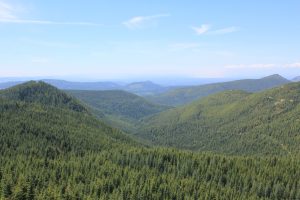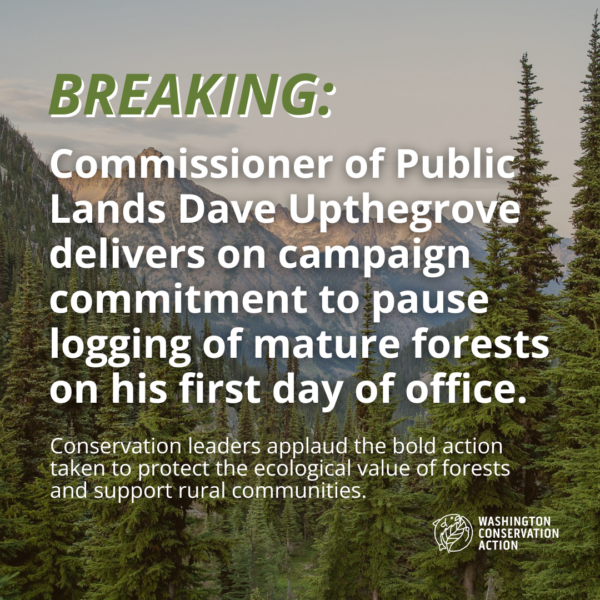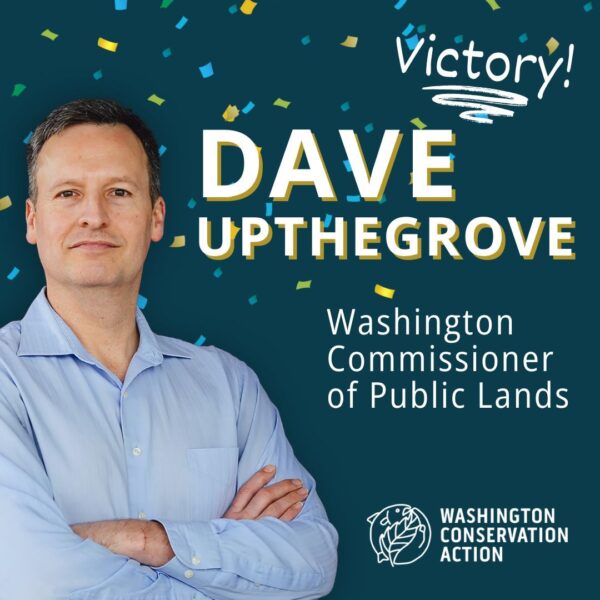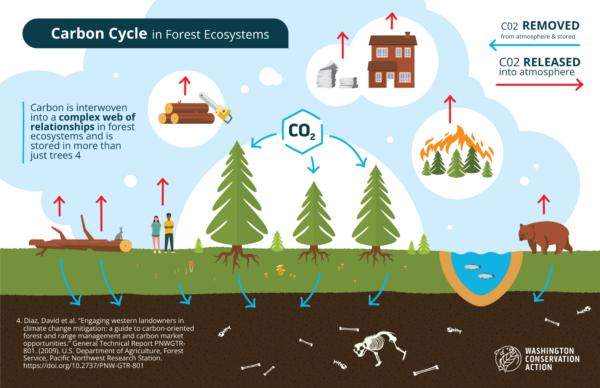Marbled murrelet conservation strategy
The BNR selected the long-awaited preferred alternative for a conservation strategy for the marbled murrelet, an endangered seabird that nests in older forests here in Washington. The alternative will likely reduce the already low murrelet population on state lands by at least 20%. It also doesn’t take into consideration the recommendations made by the Environmental Protection Agency and Washington’s Department of Fish and Wildlife, and the numerous environmental organizations that commented on DNR’s proposals.
However, due to advocates like YOU, we were able to push back on other alternatives that would have resulted in even less ideal outcomes.
Sustainable Harvest Calculation

Every decade DNR calculates how many trees it can sustainably harvest on state lands—this is called the Sustainable Harvest Calculation. This important but obscure decision has an enormous impact on our state. It determines how much habitat is protected in Western Washington, and how much revenue the schools and county beneficiaries can expect. Historically, that revenue has come from timber sales. This puts too much pressure on our state forests and makes it difficult to achieve ecological goals. On Tuesday, the BNR made the wise decision to exclude volume from riparian areas in the calculation of the sustainable harvest level. This will lead to a more accurate projection and achieve a better ecological outcome.
They also decided how to reconcile arrearage, or the difference between the projected volume of timber and what was actually cut from last decade. The BNR sought a compromise by deciding to harvest only a portion of the arrearage. Overall, WEC was mixed on the decision, but one bright spot was the commitment to develop a policy around this issue so it doesn’t plague future boards.
What next?
The board’s selected alternatives will be evaluated sometime next year in a supplemental environmental impact statement, and the public will once again be asked to comment on the proposal. In the meantime, WEC will continue to advocate for stronger protections for our endangered species and will also look to provide economic solutions to impacted rural communities.
Want to make sure you have the latest information on these issues? Sign up for our murrelet listserv to receive up-to-the-minute updates and learn how to take action to fight for our forests and wildlife. Learn more about murrelets here.



